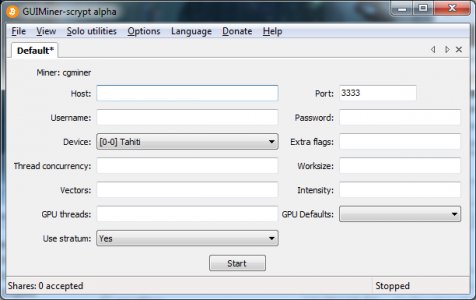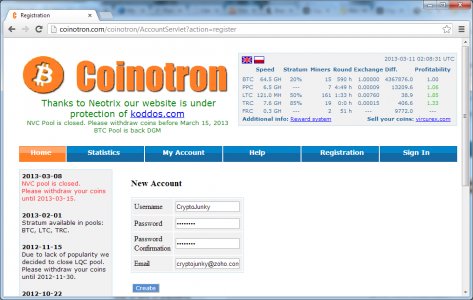Litecoin wallet firewall ports
 Litecoin has been making a lot of noise recently after a sharp rise in price. It could be that Bitcoin miners are finally feeling the pinch of specialized mining hardware known as ASICs. It could also be that a flood of newcomers to the crypto currency market is creating a demand not just for Bitcoin but also for Litecoin. In any event, I’ve had quite a few people asking about a basic guide for Litecoin mining so here it is.
Litecoin has been making a lot of noise recently after a sharp rise in price. It could be that Bitcoin miners are finally feeling the pinch of specialized mining hardware known as ASICs. It could also be that a flood of newcomers to the crypto currency market is creating a demand not just for Bitcoin but also for Litecoin. In any event, I’ve had quite a few people asking about a basic guide for Litecoin mining so here it is.
Update 1/2/2014: This guide covers Radeon graphics cards. For a guide covering NVIDA cards check out our new Beginner’s Guide To Litecoin Minnig With NVIDIA Graphics Cards.
 Mining Basics
Mining Basics
Litecoin mining is the process of using your computer’s CPU (Central Processing Unit) and GPU (Graphics Processing Unit) to process transactions for the Litecoin network. By doing this you can attempt to solve a ‘block’ which pays out a reward. Currently the Litecoin reward per block is 50 Litecoins.
 Unlike Bitcoin, CPUs can still contribute enough hashing power to be significant to Litecoin, though this may quickly change. In fact, this was one of the original design features of Litecoin. Because Litecoin uses a scrypt encryption algorithm there is a much smaller efficiency gap between CPU mining and GPU mining. For this reason the Litecoin client still has a built in CPU mining program.
Unlike Bitcoin, CPUs can still contribute enough hashing power to be significant to Litecoin, though this may quickly change. In fact, this was one of the original design features of Litecoin. Because Litecoin uses a scrypt encryption algorithm there is a much smaller efficiency gap between CPU mining and GPU mining. For this reason the Litecoin client still has a built in CPU mining program.
Another important concept of modern mining is pool mining. A mining pool is a group of miner’s that pool their resources together so that they can find blocks faster. The reward is then split between the pool members based on their contributions. This tutorial uses Coinotron mining pool along with GUIMiner Scrypt and assumes Windows 7 or 8 as an operating system.






